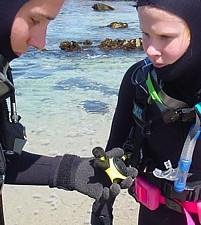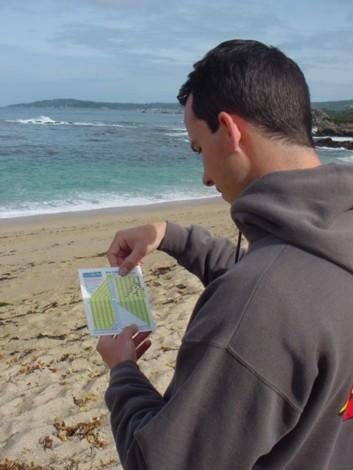Dive Planning
Communication is difficult underwater. As you read earlier, underwater communication is limited to hand signals, making most communication nearly impossible. For this reason, it's important to establish several protocols for the dive before going underwater. This includes emergency planning and dive activity agreements.

Emergency Plan
Emergencies rarely occur, but knowing what to do if one does can mean the difference between life and death. An emergency plan includes a review of emergency procedures, the location of first aid equipment, and a plan for contacting emergency personnel.
At a minimum, you and your buddy should review and agree on procedures to follow if you become separated underwater or if one of you runs out of air. These procedures are covered later in this chapter.
All divers should have a first aid kit readily available. Discuss the location of the first aid kit during the emergency plan, and check its contents to make sure it's fully stocked.
Finally, decide how emergency personnel will be contacted in the event of an emergency. If a cellular or pay phone is available, test the phone before conducting the dive.

Dive Activity
The final step is to agree on the activity. This includes, but is not limited to, an agreement on maximum depth, maximum dive time, minimum air pressure, navigation pattern, dive objective, and designation of a dive leader.
Maximum depth and dive time are significant factors in the risk of decompression sickness, and careful planning before the dive is essential to ensure your dive is within safe limits. You'll learn how decompression sickness forms and how to determine maximum limits later in this course.
It's essential that you set a navigation pattern and dive objective before you begin the dive. Communication is limited underwater, so both divers must agree on how the dive will be conducted while accurate communication is still possible.
The dive leader is in charge of navigation and making underwater decisions. Choosing a leader is important because it helps avoid the confusion that results from two divers attempting to make decisions in an environment where communication is difficult.
